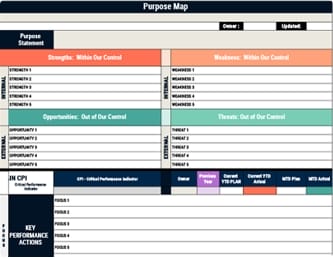Imagine a rowing team, perfectly synchronized, gliding across the water; that’s what high-performance teams should strive to emulate. Achieving operational excellence involves more than just putting skilled individuals together; it requires a strategic approach to recruitment, a focus on aligning values, and fostering a culture where growth and accountability thrive. By understanding how to build such teams, you can unlock the potential for sustained success and innovation. Are you ready to explore how these elements come together?
Key Takeaways
- Foster trust and collaboration to enhance team dynamics and effectiveness.
- Recruit talent with complementary skills and cultural alignment for cohesive team building.
- Set clear expectations and accountability to drive team ownership and performance.
- Promote continuous learning and development to boost innovation and adaptability.
- Encourage cross-functional collaboration to improve creativity and project efficiency.
Defining High-Performance Teams
High-performance teams are the backbone of any successful organization, comprising individuals who bring complementary skills and work in harmony towards common objectives.
You’re part of a team where dynamics flourish through trust and collaboration. These teams operate with clear expectations, ensuring each member understands their roles and responsibilities, leading to accountability and minimizing conflicts.
By aligning with organizational goals, high-performance teams consistently achieve success and demonstrate 20% higher productivity and profitability than average teams.
High-performance teams aligned with goals deliver 20% higher productivity and profitability.
Continuous learning is vital, encouraging innovation and adaptability in the face of change. Such an environment fosters team success, where effective decision-making and constructive conflict resolution become second nature, driving both personal and collective growth.
Embrace these elements, and you’ll see exceptional results.
Recruiting the Right Talent
How do you ensure you’re recruiting the right talent for your high-performance team? Focus on technical capabilities and cultural fit, as they’re crucial to building a cohesive team. Consider these steps:
- Structured Interview Processes: Implement behavioral-based assessments to identify candidates with strong problem-solving skills and a history of collaboration and adaptability. This ensures they can thrive in a high-performance environment.
- Emphasize Cultural Fit: Seek individuals who align with your organization’s values and mission. This alignment boosts employee engagement and retention, as team members feel a deeper connection to their work.
- Highlight Employer Branding: Showcase your company’s culture and values to attract candidates who resonate with your vision, ensuring they’re not just technically skilled but also committed and passionate about your goals.
Cultivating a Collaborative Team Environment
Creating a collaborative team environment is essential for maximizing the potential of your team, as it encourages open dialogue and idea sharing, which can significantly enhance creativity and problem-solving.
By cultivating trust and mutual respect, you create a culture of collaboration where team members feel valued and engaged. Implement regular team-building opportunities to strengthen relationships and foster open communication.
Cultivating trust and mutual respect fosters a collaborative culture, valuing and engaging team members through open communication.
Recognize team success to boost engagement and reinforce the importance of collaboration over individual achievements. Establish clear communication protocols to prevent misunderstandings, enhancing team satisfaction.
Encourage cross-functional collaboration to break down silos, improving project efficiency and completion times.
Establishing Clear Expectations and Accountability
As you build a collaborative team environment, it’s important to establish clear expectations and accountability to ensure that each team member understands their role in achieving collective goals.
Clearly defined roles and responsibilities help your team members see their individual contributions towards the broader objectives, fostering a sense of ownership.
Set measurable performance indicators to track progress and evaluate success, ensuring alignment with your organizational priorities.
Regular progress reviews and feedback sessions are vital for maintaining accountability, allowing team members to pinpoint areas for improvement and celebrate achievements.
Creating a culture of ownership encourages initiative and responsibility, enhancing motivation and commitment to team success.
Aligning team goals with organizational objectives ensures everyone works towards a shared vision, reinforcing focus and accountability.
- Define Roles and Responsibilities
- Set Measurable Performance Indicators
- Conduct Regular Progress Reviews
Promoting Continuous Learning and Development
While fostering a culture of continuous learning and development, it’s crucial for high-performance teams to prioritize skill enhancement and knowledge acquisition, which not only boosts team productivity by up to 20% but also strengthens employee engagement and retention.
Implementing mentorship programs is essential as they accelerate the growth of emerging leaders and ensure team members feel supported.
Regularly assessing skills gaps allows you to target training initiatives, making your team adaptable in a rapidly changing environment.
High-performing teams thrive on collaboration across departments, fostering innovation and improving customer satisfaction by 10%.
Encouraging continuous development helps team members take ownership of their work, viewing challenges as opportunities for growth, thus enhancing resilience and adaptability throughout your organization.
Effective Conflict Management Strategies
To effectively manage conflicts within high-performance teams, it’s essential to establish clear communication protocols that prevent misunderstandings and foster open dialogue among team members.
Effective leaders know that fostering collaboration is crucial for maintaining healthy team dynamics. By utilizing structured conflict resolution frameworks like the interest-based relational approach, you can address disagreements while preserving relationships.
Consider implementing a culture of feedback to nurture trust and ensure conflicts are addressed early. Training in active listening and empathy will equip team members to understand diverse perspectives, contributing to constructive conflict resolution.
To strengthen these strategies, consider:
- Regular team-building exercises to build trust and mutual respect.
- Structured conflict resolution training to enhance team dynamics.
- Ongoing feedback sessions to maintain open dialogue.
Celebrating Team Success and Recognizing Achievements
Recognizing and celebrating team success is essential for cultivating a high-performance environment that thrives on productivity and profitability. Celebrating achievements leads to a 20% productivity boost, emphasizing the need to recognize and reward team success.
Celebrating team success boosts productivity by 20%, essential for a high-performance, profitable environment.
Acknowledging accomplishments enhances employee engagement and retention, creating a culture of appreciation. Diverse recognition programs motivate by celebrating project milestones and individual contributions.
Use data to highlight successes, fostering transparency and continuous improvement. Tailor recognition to individual preferences for a commitment to shared goals. Set clear expectations and embrace diverse perspectives to build a cohesive team.
Recognizing achievements isn’t just about acknowledgment; it’s about reinforcing the team’s commitment to shared goals and creating an environment where everyone feels valued and driven to excel.
Implementing System Improvement Strategies
Implementing system improvement strategies begins with thoroughly analyzing existing processes, as this detailed examination helps identify inefficiencies that, when addressed, can enhance productivity by up to 20%.
Engaging team members in this analysis fosters ownership and drives meaningful change, promoting operational excellence. Use data-driven insights to guide your improvements, ensuring they align with measurable performance goals.
Continuous improvement requires resources and training to adapt to new systems, enhancing problem-solving capabilities.
Here’s how you can implement system improvement strategies effectively:
- Involve your teams: Encourage team members to identify and suggest improvements, boosting accountability and engagement.
- Leverage data: Use data-driven insights for making informed decisions, ensuring strategies meet performance goals.
- Conduct regular reviews: Establish review sessions to evaluate progress, allowing your teams to adapt and maintain momentum.
Frequently Asked Questions
What Are 5 Characteristics of a High-Performing Team?
To identify a high-performing team, recognize five key characteristics:
First, ensure the team has a clear purpose, so everyone understands their role.
Second, build trust and mutual respect to enable open communication.
Third, define roles and responsibilities to reduce conflict and enhance accountability.
Fourth, maintain a results-oriented focus to drive productivity.
Lastly, prioritize continuous growth by engaging in learning opportunities and feedback systems, fostering a culture of improvement and adaptability.
What Are the Four Essential Elements for Operational Excellence?
You might wonder if focusing on just four elements is enough for operational excellence, but it truly is.
Strategic alignment ensures you’re all working towards the same goals, maximizing impact.
Process optimization is about cutting waste and boosting efficiency.
Customer-centricity means you’re always meeting customer needs.
Finally, people development empowers your team through training, fostering a culture of improvement.
Together, these elements create sustainable success and peak performance.
What Is Six Sigma for Operational Excellence?
Six Sigma for operational excellence focuses on improving processes by systematically reducing defects.
You’ll use the DMAIC approach—Define, Measure, Analyze, Improve, Control—to enhance quality and efficiency.
By leveraging statistical tools like process mapping and control charts, Six Sigma helps you understand and refine operations.
This methodology not only boosts performance but also cultivates a culture of continuous improvement, empowering teams to own quality initiatives and drive significant cost savings.
What Are the 5 Dynamics of High-Performing Teams?
To understand high-performing teams, focus on five key dynamics: a shared purpose ensures everyone works towards common goals, boosting engagement and productivity.
Trust and mutual respect encourage open communication and effective collaboration.
Clear roles prevent conflicts and ensure accountability, while a results-oriented mindset pushes the team toward excellence and customer satisfaction.
Finally, fostering continuous learning and adaptability helps team members grow and tackle challenges confidently, ensuring long-term success.
Conclusion
You’ve delved into the dynamics of designing dynamic, high-performance teams, discovering that clear communication and collaboration create a cohesive culture. By recruiting the right talent and reinforcing responsibility, you can cultivate continuous improvement. Encourage education and embrace effective conflict management to ensure engagement. Celebrate successes and systematically seek solutions to sustain success. Remember, real results come from recognizing and rewarding resourcefulness, allowing your team to adapt adeptly to any adversities, achieving operational excellence effortlessly.



